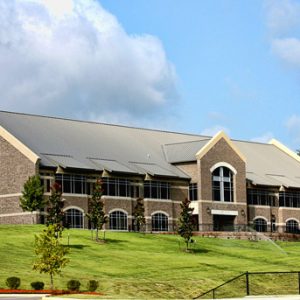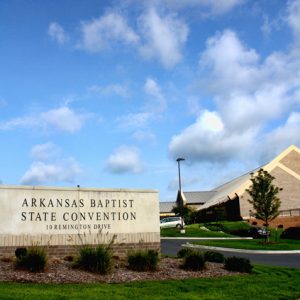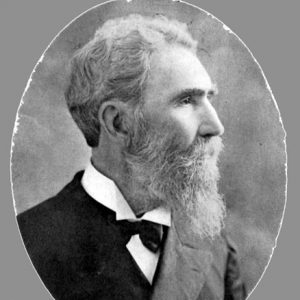calsfoundation@cals.org
Arkansas Baptist State Convention
The Arkansas Baptist State Convention (ABSC) was organized at Brownsville, now Tulip (Dallas County), on September 21, 1848. Among the convention’s founders were William H. Bayliss, Nathaniel G. Smith, and George Ann Bledsoe. Bayliss, a lawyer and merchant who migrated from Tennessee to Arkansas in the 1830s, served as the first president of the convention. In creating the state convention, these leaders and their supporters were following a pattern, long evident in Baptist life in Europe and the United States, of local churches forming cooperative associations, with those associations sometimes forming larger conventions. It was hoped that the new convention would collect funds and inspire support for missions and education. The Civil War ravaged the nascent state Baptist organization; especially damaging was the loss of the convention’s educational fund. This loss was so severe that the convention was not able to launch a convention-sponsored college (now Ouachita Baptist University) until the 1880s.
In 1867, pastors and laymen met in Little Rock (Pulaski County) to attempt the revitalization of the convention. William M. Lea, Ebenezer Lee Compere, and J. B. Searcy were among the leaders of the restoration effort. Especially significant for the restoration of the convention was the post–Civil War emergence of a cadre of younger ministers, the most notable being future governor James P. Eagle. Mentored by William Lea, Eagle emerged by the late 1870s as the convention’s principal leader; in 1880, he began more than two decades as convention president.
Eagle, more than any other individual, anchored the Arkansas Baptist State Convention firmly within the larger Southern Baptist Convention (SBC); in fact, Eagle served two terms as president of the SBC, the first Arkansan to achieve that distinction. Eagle’s influence in shaping the convention was complemented by the leadership of his wife, Mary Kavanaugh Eagle. She helped create the Arkansas branch of SBC’s Women’s Missionary Union, an entity that wielded considerable power and profound influence within the ABSC. After 1890, and for the next twenty years, the convention sponsored several new educational initiatives, specifically the creation of several Baptist academies and a women’s college, Central College for Women in Conway (Faulkner County). The ABSC also established an orphanage in 1896 in Monticello (now Arkansas Baptist Children’s Homes and Family Ministries). None of these institutions received large financial support from the convention, but all operated under the ABSC’s general imprimatur and with nominal funding.
At its annual meeting in Paragould (Greene County) in 1901, the ABSC suffered the defection of nearly half of the state’s Baptist associations and churches. The division occurred generally along a town-church/rural-church axis. Among other frustrations, resentments over the centralizing tendencies of Eagle and his supporters alienated many rural congregations. Though deeply damaging to the ABSC at a demographic level, the defection of these churches and associations, known as the Landmark Baptists or Missionary Baptists, left the ABSC able to move forward under the leadership of committed convention-minded leaders, without the interior opposition of those less inclined toward centralization. Among the new leaders of the convention after the disruption of 1901 were men and women such as Arthur James Barton, W. E. Atkinson, James Sterling Rogers, John William Conger, and Dixie Jackson. These individuals were all committed to the larger SBC’s ministries and missions as they worked to develop and expand the ABSC’s own array of institutional agencies and services. In 1902, the convention leaders established the Baptist Advance (now the Arkansas Baptist Newsmagazine) as a means for the dissemination of convention news and as an advocate for convention programs and projects. The downtown Little Rock headquarters of the ASBC was established in 1912. The early 1920s witnessed the creation of two convention-affiliated hospitals, in Pine Bluff (Jefferson County) and Little Rock. Also, in 1925, the ABSC established the Arkansas Baptist Assembly facility at Siloam Springs (Benton County).
The work of the ABSC was severely disrupted by the financial turmoil of the 1920s and 1930s; especially hard hit were educational institutions, with the convention’s Baptist academies not surviving the period. Central College survived the economic turmoil of those decades, but was so diminished that the institution was closed in 1947, with the campus later sold to the Baptist Missionary Association of Arkansas. The following year, the ABSC began to offer a limited financial support to Southern Baptist College (now Williams Baptist University) in the northeastern part of the state; this limited support gradually evolved into ABSC ownership of that institution in 1968.
Compared to some other affiliated state conventions, the ABSC was not significantly disrupted by the struggles that divided the SBC during the 1970s and 1980s; these struggles were occasioned by deep division within SBC leadership circles over questions of biblical authority (often referred to as the inerrancy controversy). In part, the ABSC avoided the more bitter manifestations of the SBC conflict because the ABSC and its member churches, agencies, and institutions were more united on the key issue of biblical authority than was true in some other state conventions and in the larger SBC.
In 1998, the ABSC celebrated its sesquicentennial. The convention’s annual report (for 2007) noted a total membership of 525,000 in 1,406 churches. Convention operations are guided by an executive director and a staff of agency directors; these agencies include the Arkansas Faith and Ethics Council, Evangelism and Church Growth, Collegiate Ministry, Missions, and the Arkansas Baptist Foundation. The annual budget of the Arkansas Baptist State Convention is approximately $20 million. In 2009, the ASBC moved its headquarters from downtown Little Rock to a new complex on Remington Drive in the southwestern part of the city.
For additional information:
Hinson, E. Glenn. A History of Baptists in Arkansas, 1818–1978. Little Rock: Arkansas Baptist State Convention, 1979.
Rogers, J. S. History of Arkansas Baptists. Little Rock: Arkansas Baptist State Convention, 1948.
Williams, C. Fred, Ray Granade, Kenneth Startup. A System and Plan, Arkansas Baptist State Convention, 1848–1998. Franklin, TN: Providence House, 1998.
Kenneth M. Startup
Williams Baptist University









Comments
No comments on this entry yet.